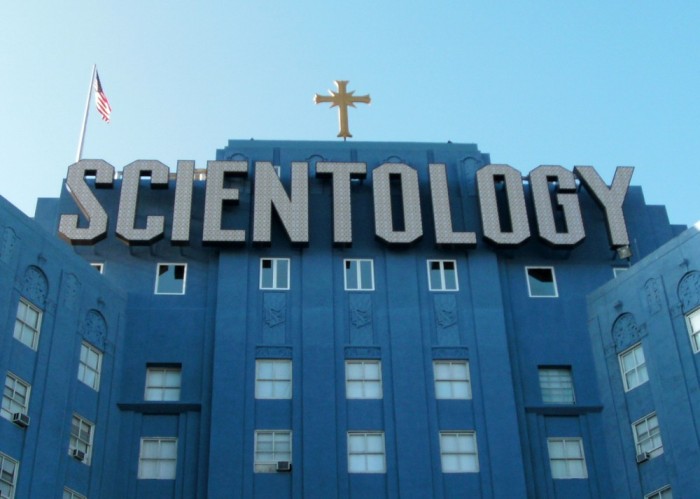Tuesday 9 December 2014
Whenever I hear the word ‘cult’, Heaven’s Gate and the Peoples Temple spring to mind. These groups were involved in two of the most infamous mass suicides of recent times. In March 1997, not too far from San Diego, the leader of Heaven’s Gate, Marshall Applewhite, convinced all 39 members – aged between 26 and 72 – to ingest a deadly mixture of phenobarbital and apple sauce, wash it down with vodka, and wrap plastic bags around their heads. This was, he claimed, “the only way to evacuate this Earth” and earn their souls passage on the spacecraft which was in the tail of the passing Hale-Bopp comet. The event orchestrated by Jim Jones, the charismatic leader of the Peoples Temple, occurred in Guyana at the eponymous Jonestown in 1978. It was facilitated by a large metal tub of grape juice flavoured with a deadly mix of four drugs (including cyanide), and took the lives of 920 people.
When tragic incidents like these take place the response is usually one of disbelief. Why did it happen? Could anything have been done to prevent it? This search for answers is then forsaken, and, so, in an attempt to reassure ourselves, the media labels the group as crackpot and unreachable. They tell us there was nothing we could have done. I consider this to be too simple. In this piece I wish to answer the following question: if somebody holds an extreme view can they be persuaded to change their mind? Ultimately, the answer is an overwhelming “yes, but” because it is both difficult and exceptional for an outsider to be the catalyst. More often than not, people change their own minds.
Cults continue to exist and be feared because they are easier to join than they are to leave. It goes without saying that they are not all death cults, not least because this would make their recruitment department’s job a bit fiddly. They have to give new recruits something tangible or the illusion of something tangible which the recruit feels they are missing. Creating this dependency gives people enough of a reason to stay. Scientology is no different in this regard.

Started in the early 1950s by science fiction author L. Ron Hubbard, the Church of Scientology calls itself ‘a religion that offers a precise path leading to a complete and certain understanding of one’s true spiritual nature and one’s relationship to self, family, groups, Mankind, all life forms, the material universe, the spiritual universe and the Supreme Being.’ If this was all there was to it then it would not be too dissimilar to mainstream religion. The Church, however, has had more than its fair share of criticism. This includes – but is not limited to – defrauding its members, brainwashing, splitting up families, and an overzealous desire to attack its critics. The attacks come in many ways, such as litigation, character assassination, and psychological abuse. For example, during the filming of the 2007 BBC Panorama documentary ‘Scientology and Me’, journalist John Sweeney was continually followed and harassed by members of the Church. The same practice was again used during the making of Sweeney’s 2010 follow-up. A quote from Richard Behar’s 1991 Time magazine article nicely sums the Church of Scientology up: it is ‘a hugely profitable global racket that survives by intimidating members and critics in a Mafia-like manner.’
Also like the Mafia, people defect from the Church every now and then. Even some of the most convinced believers alter their convictions and depart. For Tory Christman it was the Church’s insistence on curbing free speech that tipped her over the edge. Christman had worked in a subsection of the Church’s hierarchy called the Office of Special Affairs (OSA) since the late 1970s. In 1999, the mandatory Scientology censorship software on her home computer was removed by OSA agents so that she could monitor online material critical of the Church. Christman ran multiple accounts on several online forums and tried to quell debate about the Church by attacking its critics. In July 2000, the owner of one website reached out to her and explained his opposition, shortly afterwards Christman left the Church of Scientology. She is now a vocal critic of the organisation.

Tory Christman’s conversion is what is sometimes called a Pyrrhic conversion. In effect, this is where the goal which one is striving for is considered too costly even if it is achievable. When she was tasked with censoring online criticism two strongly held beliefs came into conflict, so she had to decide between them. This is as clear a case of cognitive dissonance as one is able to find. Simply put, cognitive dissonance is where humans hold two contradictory ideas or positions at one time and, as a direct result, experience mental distress which forces them to solve the issue. Most of the time when we end up in this situation we confabulate an explanation as to how two or more conflicting ideas can coexist together in our mind, or we suppress and ignore the problem. On occasion though we end up picking our side and this comes at the end of a long process of inner, mostly subconscious, reflection on a subject. For Christman it came down to free speech or Scientology. Seeing as they are contradictory, she had to decide between the two and came to the conclusion that she favoured free speech, and thus left the Church. This explains how she quickly came to be a critic: because it went against what she believed in, what she holds close as a part of her narrative.
Christman was certainly not the first person to have this dilemma. In leaving, however, she is probably in the minority. The power of cults lies in their ability to provide their members with agency. Most members claim to have been searching for something before finding it in their cult. This can be as simple as a sense of security or constancy. Pulling out ones roots and disassociating oneself from the group which has meant so much is not easily done. “The 9th and lowest circle of Hell is reserved for traitors,” wrote Dante in The Inferno. The thought of being considered a traitor by those that were once ideological (if not actual) brothers and sisters can be enough to make one believe their actions to be Pyrrhic.
Renouncing a belief does not happen on a whim and is rarely the result of a snap decision, whether made internally or at the behest of an external force. Changing ones conviction, especially extreme convictions, is a lengthy process of inner reflection, meditation and promotion of disillusion with the belief. People do not perform instantaneous volte-face because the tendency of our personal narrative to defend our core beliefs is paramount by necessity. If you are trying to convince someone that their strongly held belief is mistaken, then the person you are talking to has to be open to criticism in the first place for you to make the slightest bit of difference. For this they probably have to be in a good mood and they must have done some prior personal reflection. If they haven’t then they will go into a defensive state which will only strengthen their conviction, quashing any progress previously made towards a conversion.
We are an incredibly stubborn species. How often have you tried to do things your own way, only to find that the person who was giving you the guidance you ignored was correct and that you could have saved yourself a lot of time had you just listened to them? Nobody likes admitting that they were wrong. Holding an extreme belief, such as being a member of a cult, is one of the most hardened positions one can take. Our in-group/out-group mentality gives us the belief that we know what is going on, but others – the idiots, the other – do not. A Scientologist sees non-Scientologists as sadly deluded.  Imagine realising that, in actual fact, you have been the sadly deluded one. Facing this and admitting that you were mistaken is mentally analogous with submission. Solving cognitive dissonance in favour of the predating belief saves face for our personal narrative. It is easier to stick with the initial story, the cult’s story. It is easier to leave your thinking to other people and to invest total faith in a belief system which does all the thinking for you. It is the quest for a feeling of security; however, if it is attained by sacrificing freedom, then one ends up with neither.
Imagine realising that, in actual fact, you have been the sadly deluded one. Facing this and admitting that you were mistaken is mentally analogous with submission. Solving cognitive dissonance in favour of the predating belief saves face for our personal narrative. It is easier to stick with the initial story, the cult’s story. It is easier to leave your thinking to other people and to invest total faith in a belief system which does all the thinking for you. It is the quest for a feeling of security; however, if it is attained by sacrificing freedom, then one ends up with neither.
Can racists be convinced of equality? Can a homophobe support gay marriage? Yes and yes. The lingering ‘but’ is that they need to have done a lot of the work themselves such that they are open to change. The grievance which led them to their current position, therefore, needs to have been resolved in some way such that they are strong enough to abandon the oddly comforting extreme belief. This leads to another question: how could the members of Heaven’s Gate and the Peoples Temple have solved their problem outside of the cult? These groups created a family unit: they lived on the same plot of land, they dined together, and they very rarely interacted with people who were not members. They did everything as an isolated unit. Nobody who wasn’t a member knew that they were going to kill themselves. A similarity they have with Scientology is that the latter uses isolation as a tool to bolster their membership. This is the difference between cults and everyday racists, sexists, homophobes and conspiracy theorists who are chiefly assimilated into society; hence, they may be easier to reach. Regardless, one still needs to have entertained the contradictory notion for a difference to be made.
(Dedicated to Inders. 02/12 – 12/14.)

Reblogged this on musicteacher2014.
LikeLike